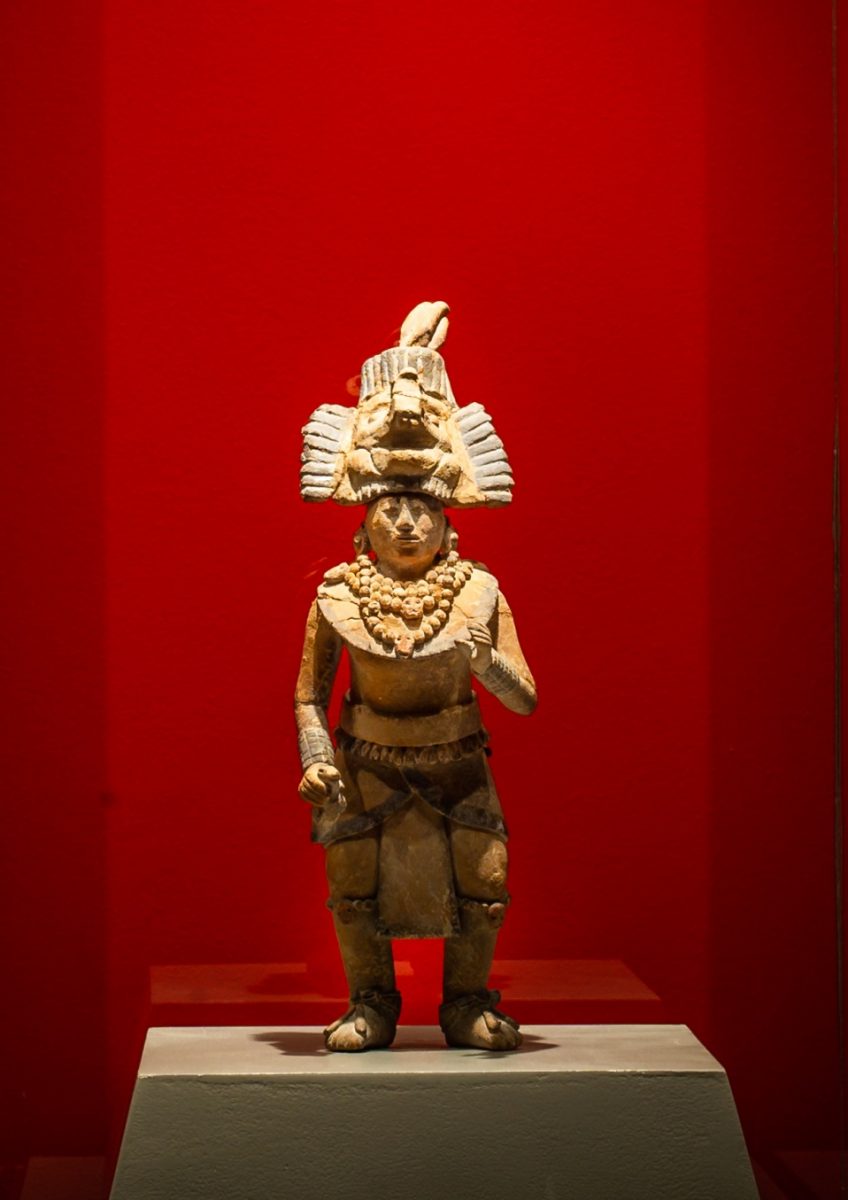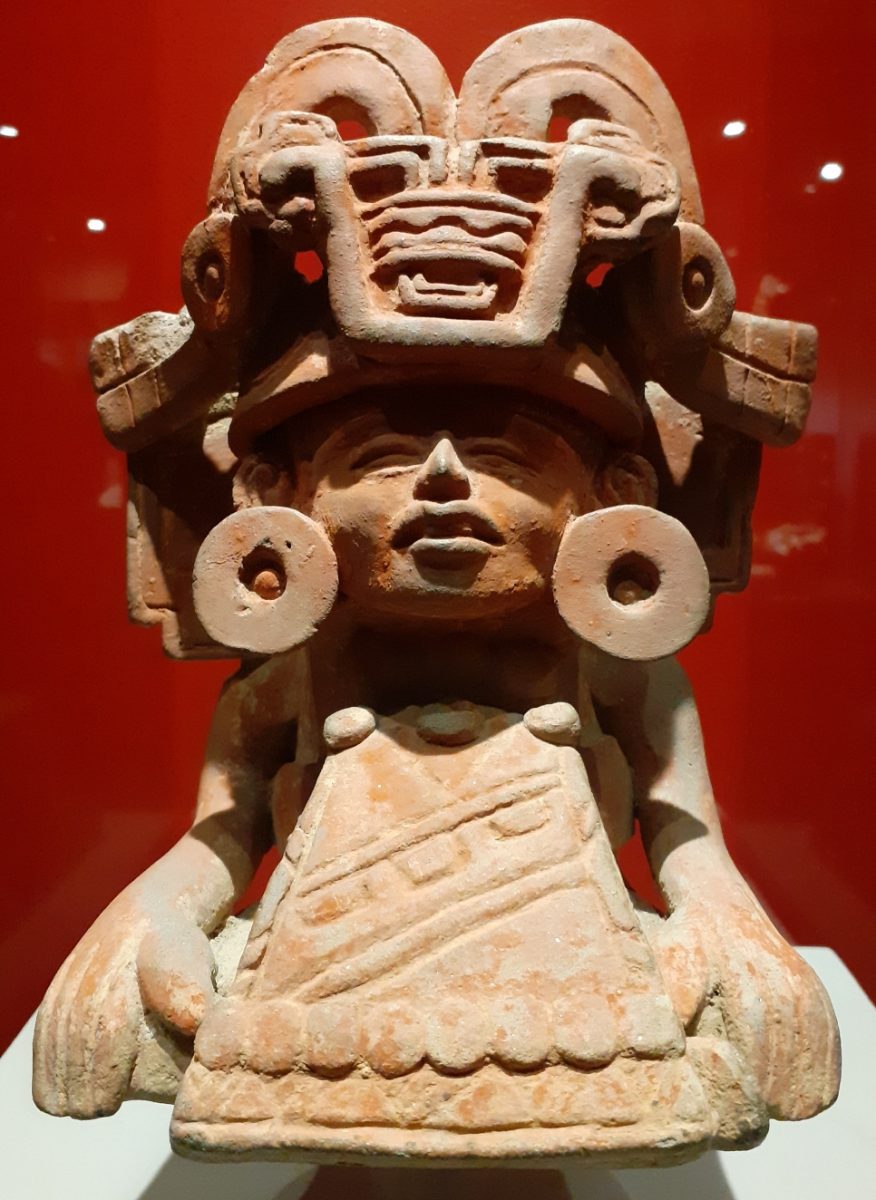Le the Museum of Americas - Auch offers its visitors to take a ticket for a time travel and space, and reveals to them the treasures of the 2nd largest collection of pre-Columbian art in France.
Maya figurine representing a richly adorned character

This funerary statuette intended to accompany and protect the deceased comes from the island of Jaina. She represents a male figure of higher rank as evidenced by her finery, her headdress and her clothes.
Jaïna: The cemetery island
To the west of the Yucatán Peninsula, separated from the shore by a narrow channel, is the island of Jaina. Oriented towards the setting sun, it was chosen as necropolis by the Mayas Puuc from the Campeche coast. But what most distinguishes this exceptional site is the presence in the tombs of numerous terracotta figurines, often enhanced with colors and in particular the famous “Mayan blue”. They are among the finest and most detailed figurines in all of pre-Columbian America.
The Jaina figurines, measuring 10 to 25 cm in height, generally modeled by hand (sometimes molded) and presenting an applied, painted and / or incised decoration, are of a very great diversity and of realistic craftsmanship. They often represent high-ranking characters, richly adorned and with particularly neat clothing details.
The Mayan Culture of 1000 BC. JC to 900 AD. JC
The Mayan civilization is one of the most most extraordinary of the pre-Columbian world, both the fields of art, writing, the sciences of astronomy or mathematics have been brought to their highest level of expression.
Emerging from 1000 BC. AD in the humid and tropical lowlands of Guatemala and Belize, the Mayan civilization will gradually extend throughout the Yucatán peninsula, covering part of present-day Mexico but also the western extremity of Honduras and El Salvador. Its peak is reached during the classical period (250 to 900 apr. J.-C.). At that time, architecture, sculpture and painting experienced an unprecedented development, of a great artistic finesse.

Unlike the Aztecs where a centralizing power had subjugated a vast territory, Mayan society was organized into several independent geopolitical entities (or kingdoms), rivals or allies. Of very many cities, each more resplendent than the next, have thus emerged, each developing stylistic particularisms that are sometimes pronounced.
Mayan societies collapsed in the XNUMXth-XNUMXth centuries for still obscure reasons. One of the causes invoked is of an ecological nature where in a context of high growth demography, political instability (wars) and difficult climatic events (series of successive dry years), the intensification of agricultural practices and the overexploitation of resources has led these companies to their downfall.
LEARN MORE
Website : Museum of the Americas - Auch
Pricing: Full price: € 6 / Reduced price: € 3 / Free for children under 18
Address: 9 rue Gilbert Brégail - 32000 Auch
Phone: 05 62 05 74 79

 "/>
"/>